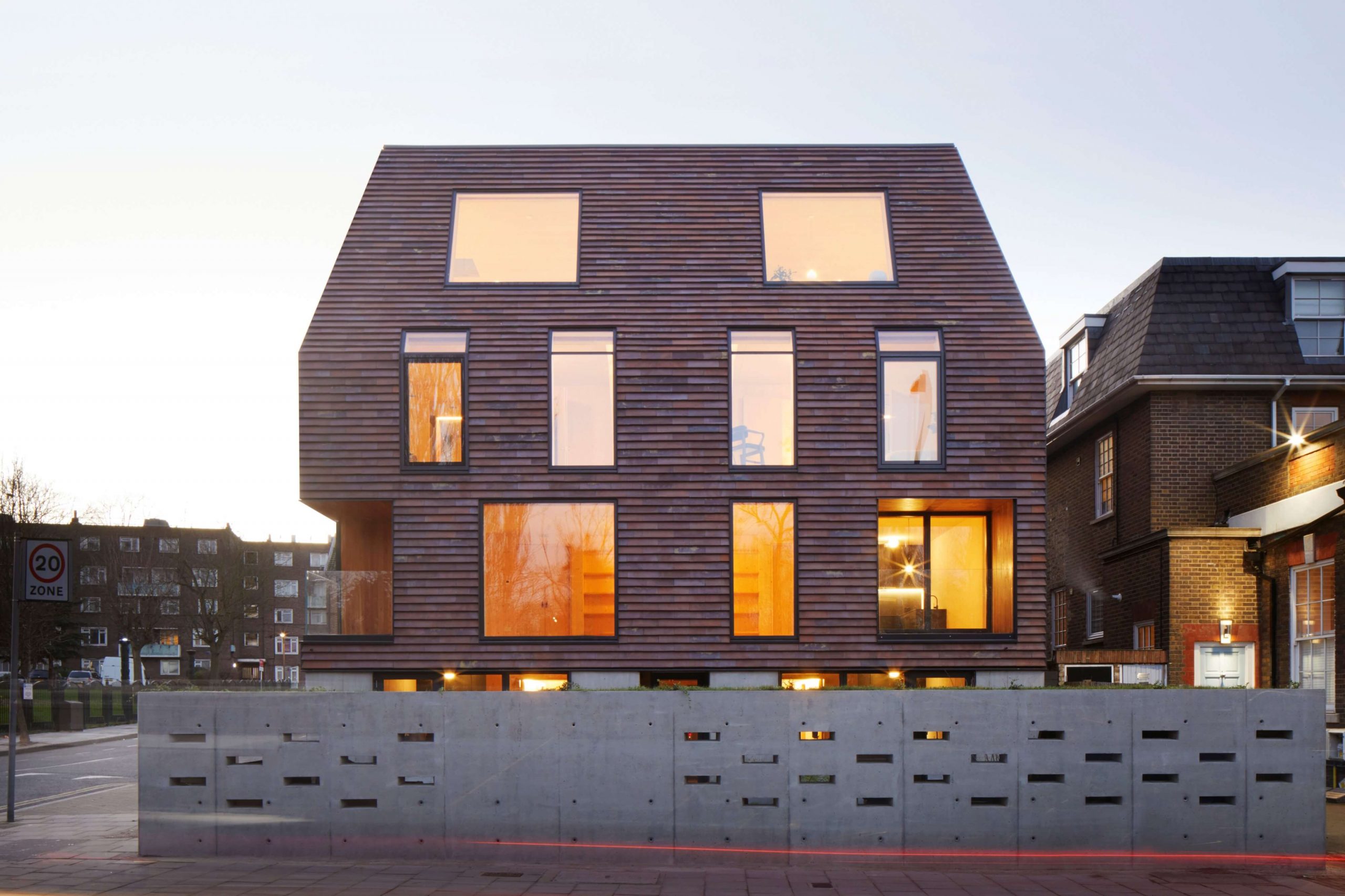As featured by PEFC International
The Rye by Tikari Works, a building of ten apartments just outside London, has seen PEFC-certified cross laminated timber (CLT) once again prove a sustainable and structural success.
The four duplex apartments are designed with an upside-down arrangement. While the bedrooms are located at entry level, the living space is above to maximise access to light and views. This arrangement has allowed the creation of large vaulted living spaces.

Tikari Works was the architect, developer and main contractor for the project. Their approach was for efficiency and ease of buildability and this dictated the design decision to create compact blocks with efficient floorplans.
Different and authentic

CLT, supplied by Stora Enso, has been used for the superstructure of the buildings and for all internal walls and staircases. This enabled the creation of uncomplicated, uncluttered spaces that provide an unfussy backdrop to furniture and daily life.
Using CLT also made construction fast and easy, while allowing the design of beautiful homes that would appeal to buyers looking for something different and authentic.
“Buyers want something that isn’t the default position,” says Ty Tikari from Tikari Works.
“This helps them grow an attachment to a property and makes it feel like a home, not a standardised product that looks the same as everyone else’s home. The idea of creating a space that draws out a feeling of attachment over time is important and this is what we have tried to achieve at The Rye.”
Efficient and sustainable
The thermally efficient CLT superstructure reduces future energy use, achieved by careful detailing and rigorous management on-site and by the in-house design and construction method. Joints in the CLT frame were taped to ensure maximum airtightness and the frame wrapped with high levels of non-toxic and non-combustible Rockwool insulation.
The 311.16 m3 of CLT by Stora Enso used in the construction of The Rye equates to 227 tonnes of CO2 being removed from the atmosphere while the trees were growing, and stored in the timber over its lifetime. The length of time required to grow this wood again in the Austrian forest is 104 seconds.
Photo credits: Jack Hobhouse
Responsible Wood is the National Governing Body for PEFC in Australia. For more information about PEFC please visit the PEFC website.






